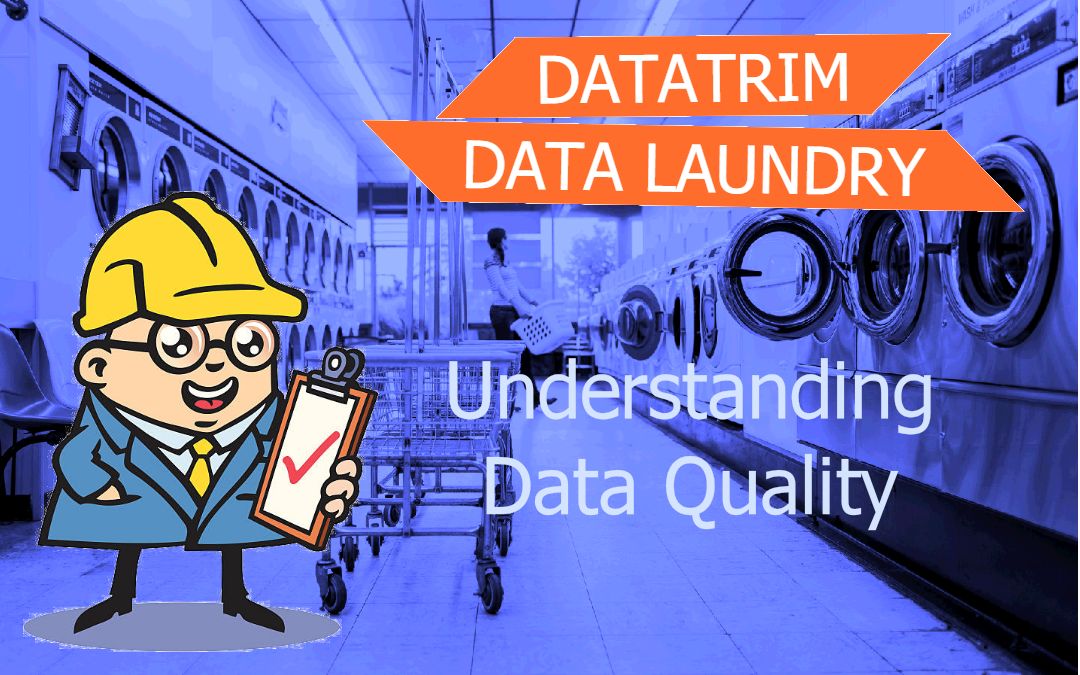Discover strategies for assessing and improving the quality of your data in Salesforce.
Data Quality is Important
Inaccurate or incomplete data can lead to 20% stalled productivity, which is one day of work each week.
The average company loses 12% of its revenue as a result of inaccurate data.
40% of all business initiatives fail to achieve their targeted benefits because of poor-quality data.
Check out what Rick Endrulat, president of Virtual Causeway, a leading outsource provider of integrated sales and marketing services around the world, says about data quality.
Good Vs. Bad Data
No reason to beat around the bush on this one, -we all have experienced the impact of bad data somewhere. The List below is meant as a reminder to those who lost the arguments, but the list is far from complete.
Defining Data Quality
So, if we want to charge head into the topic of Data Quality, lets first try to define the beast.
We will try to put it into 6 categories:
| Category: | Definition: |
| Completeness | The absence of blank (null or empty string) values or the presence of non-blank values. |
| Uniqueness | The absence of redundant information i.e. Duplicates. No data should be recorded more than once. |
| Timeliness | The degree to which data represent reality from the required point in time. |
| Validity | Data are valid if it conforms to the syntax (format, type, range) of its definition. |
| Accuracy | The degree to which data correctly describes the “real world” object(s) it represents. |
| Consistency | The absence of difference, when comparing two or more representations of a thing against a definition. |
Completeness
Data is complete if you have the information you need to perform your business processes in an effective way. If you don’t have the region information you cannot assign your lead, if you don’t have the Title of a person you cannot address this person with a job-related message, if you don’t have a phone number, you cannot call and arrange an appointment.
Validity
Although completeness is on top of our list, Validity is closely related, because what is it worth to have fields populated with values which aren’t valid, -doesn’t conform to standards, or defined acceptable values. A Zip-code field may be populated with a 5-digit Zip-code, but if the country is Canada, the Zip-code or Country is Invalid, and an invalid phone number cannot be dialed by an Auto-Dialer app.
Consistency
Having consistency across a dataset, means that you can get reliable reports, and trust your data. If you have more than 52 different values in your US State field, then some of your values are likely to be mis-spellings, abbreviations etc. and will cause your reports to show misleading numbers. Consistency is about getting rid of the redundant values in various fields, and making sure that you stick to the standards and values you use in your business processes.
Accuracy
How well does your data represent the real-world? If you contact person changed job yesterday, your data is no longer accurate and must be updated. As part of a Data Quality initiative, update of records is a must, but it is also the most expensive element, as you really must be on top of your data all the time in this never-ending hunt for perfection, which by the way: will never end.
Uniqueness
Duplicates seems to be the most obvious factor in Bad Data, but before you start finding them merging them, please consider what a “single” company is to you! Based on what you sell and how you sell, one company may have multiple locations and you consider the company as one, or you might want to count each location as a unique company, and thus keep all locations.
Timelessness
Data doesn’t age as well as wine, Companies closes, gets acquired or merges, new divisions are created and other closed or simply renamed. People change jobs and roles within the same company, or moves on to new challenges somewhere else, some may keep their mobile with them, some may get a new one. The frequency on these changes may vary from industry to industry, but be sure that records which hasn’t been made up to date recently is very likely to have lost its value helping you to achieve your business goals.
Conclusion
Bad Data is Bad, Really Bad!
Too important to be ignored, and too complex to be left under-resourced, but once you have invested in a system like salesforce, put your data into it and started build your business processes around it, measuring your success, and making critical business decision based on the data, there is no way around it, you must have and execute a plan.
In the next 3 episodes, we will address:
Accessing the Quality of Data – and explain how you can measure your Data Quality
Improving Data Quality – how you can start focusing on the Data Quality Issues and start improving the Data Quality with some simple means.
The Data Management Plan – Taking it a step further and develop a plan for how data is managed, maintained and monitored will get you that very last step of the way.
At DataTrim we…
Enable organizations to measure their Data Quality, and provide cost effective solutions to address the complex process of improving the Data quality.
Data Quality. Your business success depends on your teams’ access to complete, consistent and reliable data. … The DataTrim Data Laundry App is a cost-effective solution to assess and improve
References: https://trailhead.salesforce.com/en/content/learn/modules/data_quality



